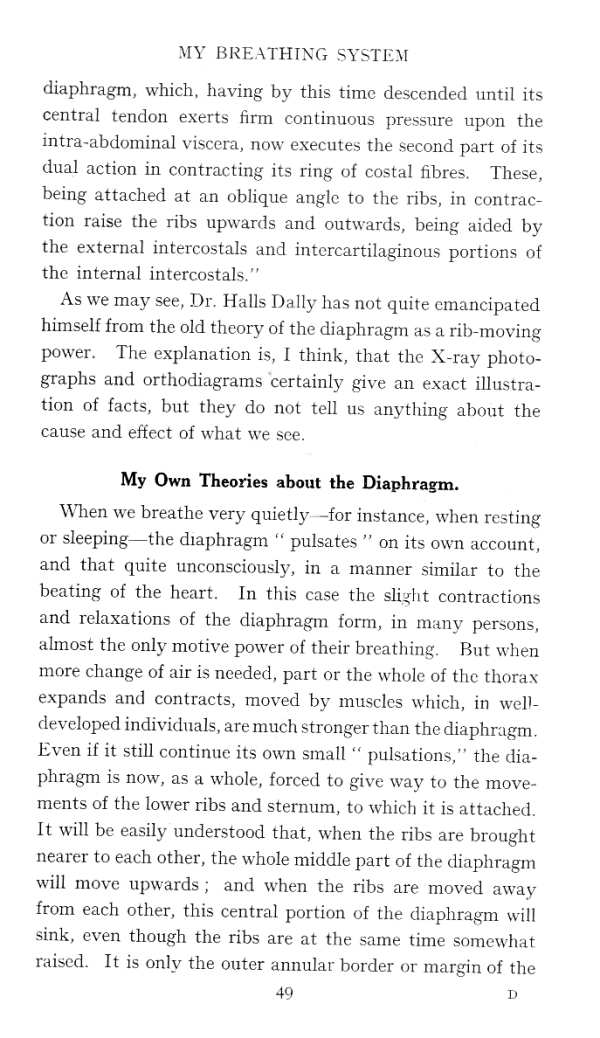mbs 049

MY BREATHTNG SYSTEM
diaphragm, which, having by this timc desccnded until its central tendon exerts firm continuous pressnre upon the intra-abdominal viscera, now executes the second part of its dual action in contracting its ring of costal fibres. These, being attached at an obliąue anglc to the ribs, in contr action raise the ribs upwards and outwards, being aided by the external intercostals and intcrcartilaginous portions of the internal intercostals.”
As we may see, Dr. Halls Daily has not quite cmancipated himself from the old theory of the diaphragm as a rib-moving power. The explanation is, I tłiink, that the X-ray photo-graphs and orthodiagrams certainly give an exact illustra-tion of facts, but they do not tell us anything about the cause and eftect of what we see.
My Own Theories about the Diaphragm.
\Yhen we breathe very ąuietly -for instance, when rcsting or sleeping—the diaphragm " pulsates ” on its own account, and that quite unconsciously, in a manner similar to the bcating of the heart. In this case the sliglit contractions and relaxations of the diaphragm form, in many persons, almost the only motive power of their breathing. But when morę cliange of air is needed, part or the whole of the thorax expands and contracts, moved by muscles which, in well-developed individuals, are much stronger than the diaphragm. Even if it still continue its own smali “ pulsations,” the diaphragm is now, as a whole, forced to give way to the move-ments of the lower ribs and sternum, to which it is attached. It will be easily understood that, when the ribs are brought nearer to each otlier, the whole middle part of the diaphragm will move upwards; and when the ribs are moved away from each other, this central portion of the diaphragm will sink, even though the ribs are at the same time somewhat raiscd. It is only the outer annular border or margin of the
49 u
Wyszukiwarka
Podobne podstrony:
43484 mbs 050 MY BREATHING SYSTEM diaphragm which is brought into a nearly vertical position when th
mbs 113 MY BREATHING SYSTEM diaphragmatic breathing during voluntary contraction. It should be done
mbs 035 MY BREATHING SYSTEM How to Expand and Contract the Thorax to its fullest Extent The thoracic
mbs 042 MY BREATHING SYSTEM the liarm done by such old habits that special excrcise of “ abdominal&q
mbs 022 MY BREATHING SYSTEM against the invasion and throw ol f thc gernis, which arc ejected with t
mbs 055 MY BREATHING SYSTEM Whcn the diaphragm is not paralysed it readily follows thc movcment of t
więcej podobnych podstron